![]()
![]()
Squid first saw service in 1943 with the Royal Navy and in the early 1950s , it was fitted into RCN destroyers. This weapons system fired six mortar bombs ahead of the ship, hence it was called an 'ahead throwing' weapon. Squid bombs, each weighing some 390 pounds, were hoisted from the Squid magazine to the Squid Handling Room located at the aft end of the ship. Here, they were rolled on to racks and stored in a 'ready use' state. When fired by the force of a small explosive charge, the bombs sailed over the length of the ship and landed within a triangle with 40 foot sides, some 275 yards ahead of the bow according to "Weapons of World War Two" by John Campbell. The first three Squids landed in a triangle and so did the Squids from the second salvo, however the second triangle was offset by 60 degrees.Six bombs were fired in a preset sequence so they actually formed opposite triangular patterns. The first salvo was set to explode at the deepest setting. The second salvo was set for 50 feet shallower. These two patterns encircled the target and the simultaneous explosions at the two depths would crush the pressure hull of the submarine.
There was only one sonar set for the attack configuration. The transducer could rotate 360 degrees and could be tilted downwards to determine the target's depth. Because the Squid is an ahead throwing weapon , then a bearing feed was sent to the Wheel house so the helmsman could steer the ship straight at the target. The depth recorder would send the information to the Squid for a depth setting on the bomb. The Squid was then fired from a switch on the range recorder in the Sonar Control room..
The mortars only had two positions. Horizontal was the loading position; Vertical was the firing position. When in the firing position, there was a stabilizing gyro that kept the tubes vertical even though the ship was rolling. The gyro for the Squid was located in the Electrical Workshop.
Power for the mortar barrel motors was controlled by an on/off switch located in the Squid Handing room. The big handwheel on the back of the barrels had a clutch . The loader would disengage the motor and turn the wheel to bring the tubes to the loading position. Once loaded , the wire for depth control was plugged into the forward face of each bomb. Then the motor would be engaged and the barrels would elevate to vertical and be gyro stabilized. A LEVEL signal from the gyro fed an amplifier in the ships Office Flats. The Squid transmitted a signal of its position to the amplifier. These were compared and an output was sent to a double metadyne [1] in Steward's Flats. This supplied power to the motors. As this was a British design, they used Magslips [2] to send the information. Each mount had its own system. There was a panel in the Squid Handling room that sent the signal to the bombs to determine the explosion depth and also controlled the firing sequence. The recoil force generated by the simultaneous firing of all six mortars would be too great for the deck so they were fired in sequence. The firing mechanism in each bomb is believed to be a motor connected to screw attached to bellows. Once the correct depth was reached, the bomb would explode.
The photos which follow show how the Squid make the trip from the magazine to the mortar barrels.
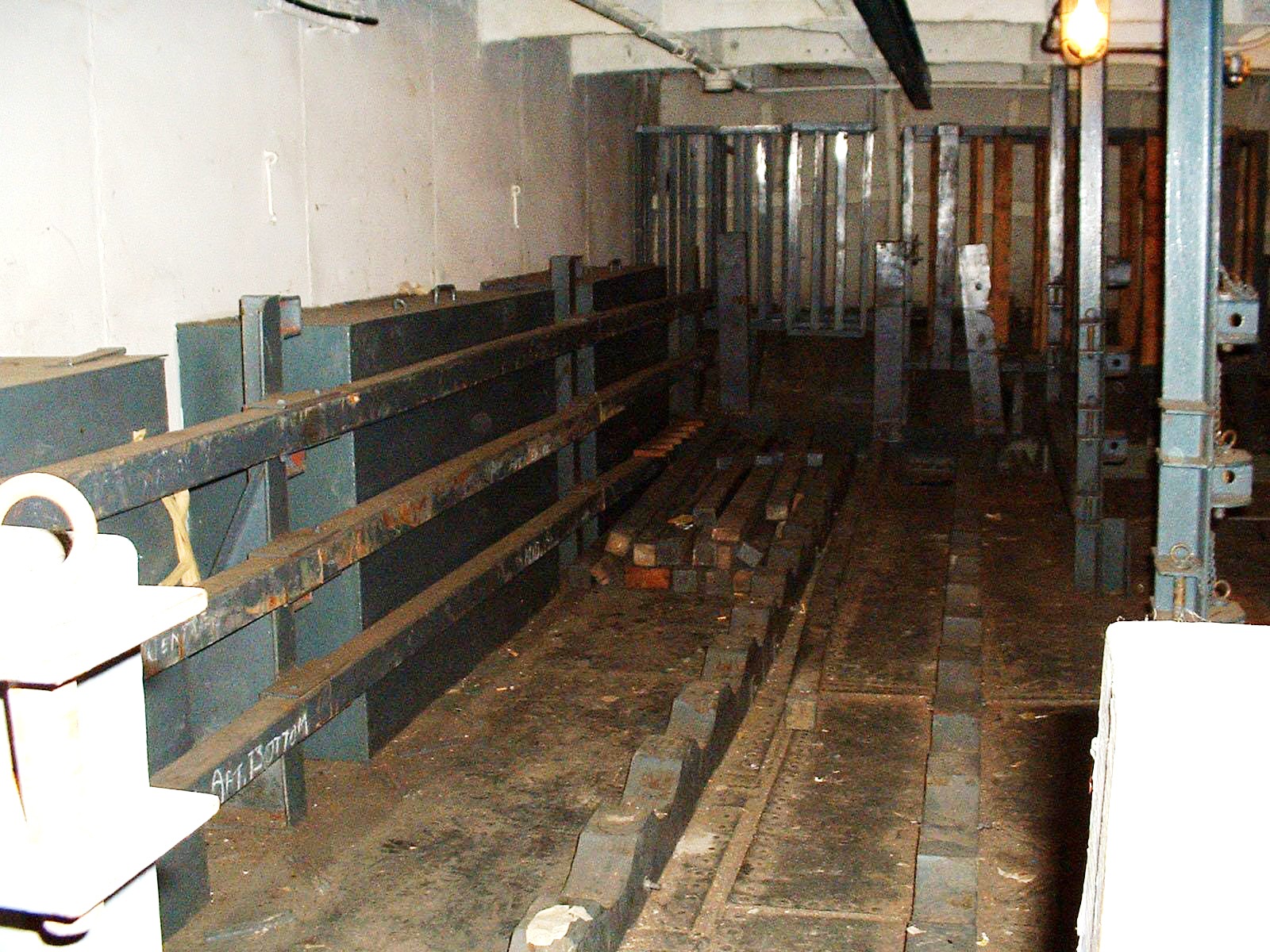 |
| Squid bombs were stored in cradles in the Squid magazine. Access to the magazine was through a covered manhole in front of the Wardroom door. The Squids were brought from their cradles to the hoist with a trolley that rode on a rail attached to the deckhead. Part of the rail can be seen at the top of the photo. |
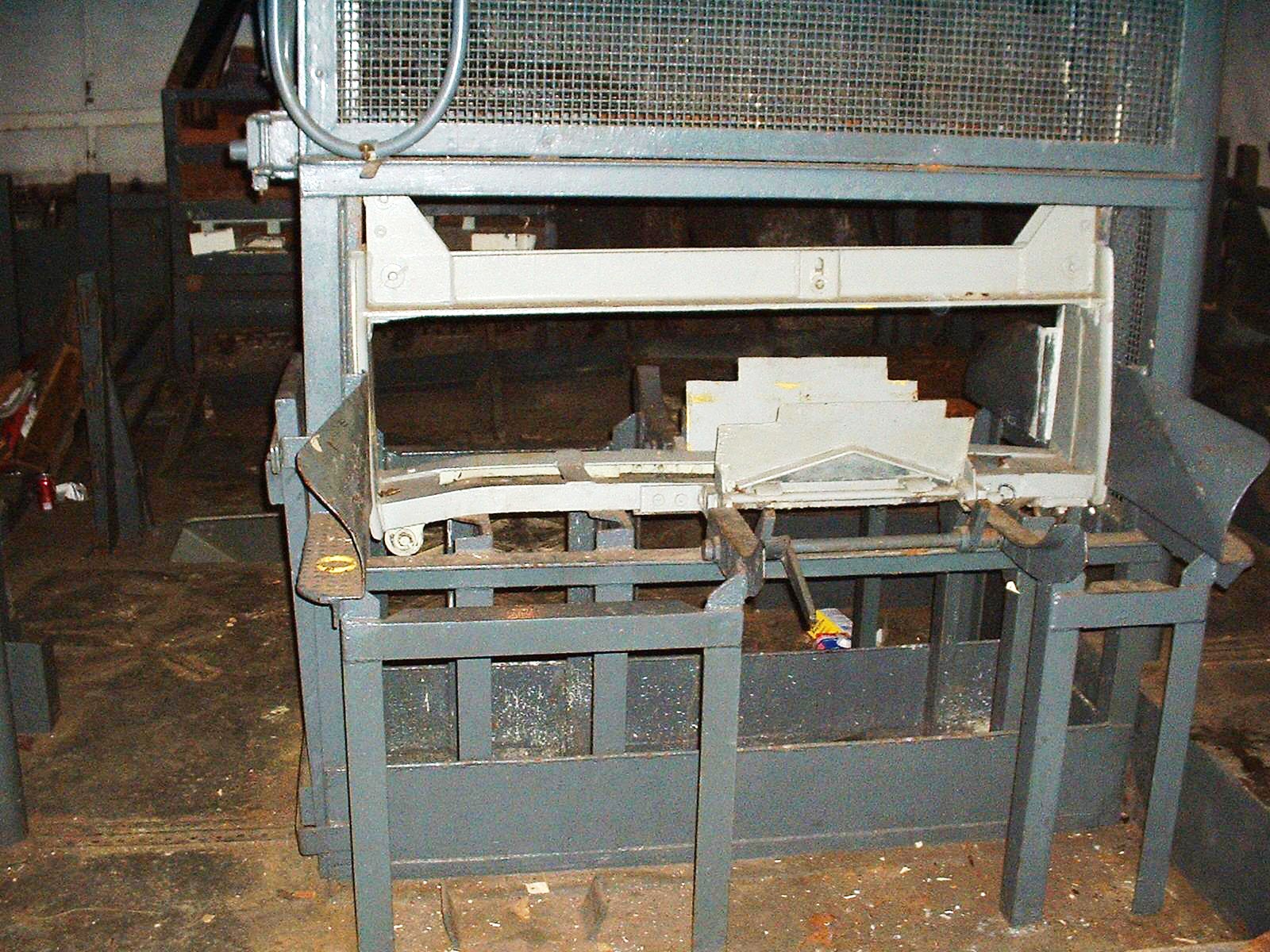 |
| The Squid hoist is at the bottom of the shaft, ready to receive a Squid bomb. . |
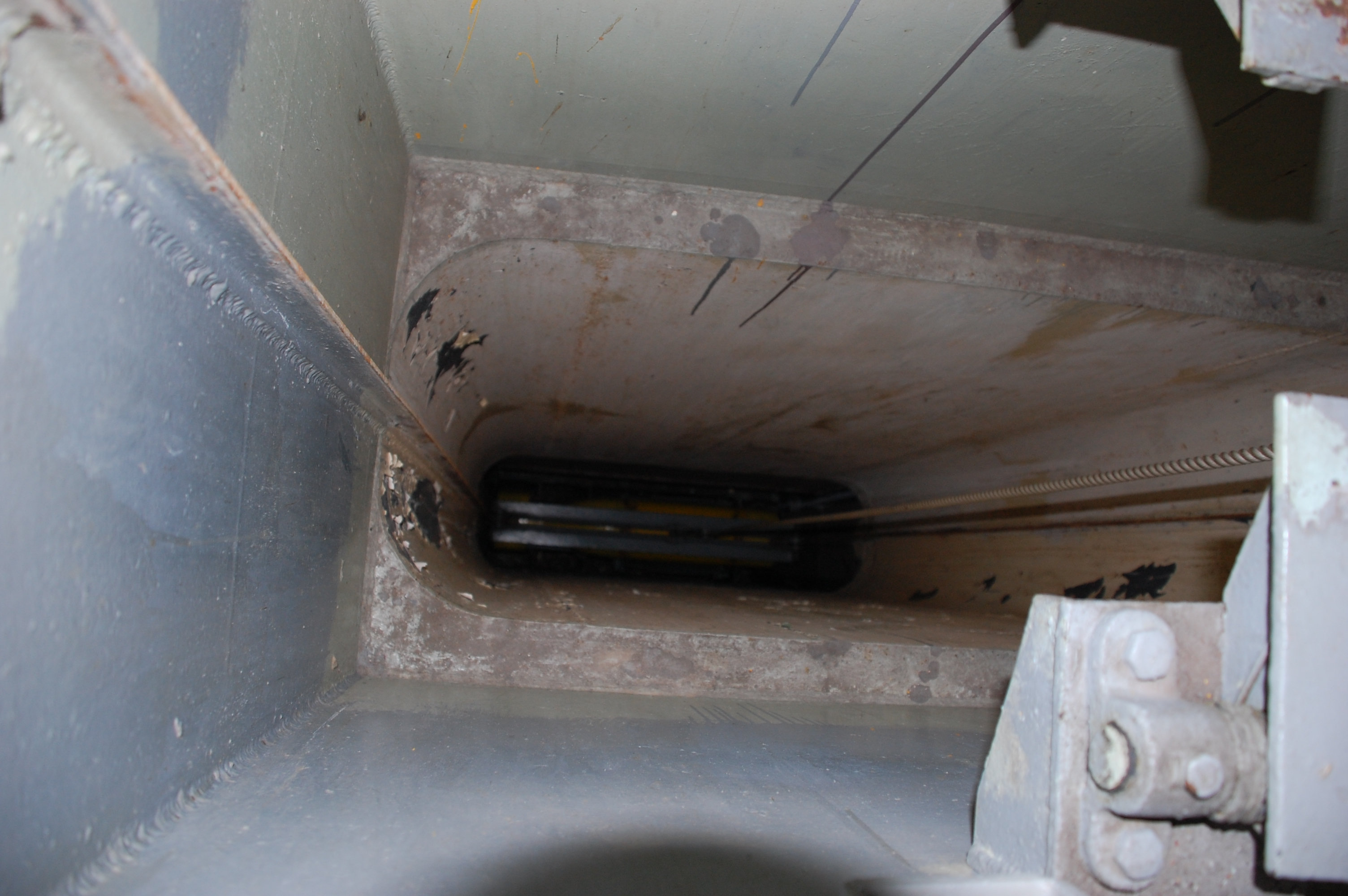 |
| Looking directly down the shaft of the Squid hoist. Squid bombs were hoisted from the magazine to the Squid Handling Room. Haida carried 96 bombs in the magazine plus 12 more in the Squid Handling Room and 6 in the mortar tubes. That was enough for 19 salvos |
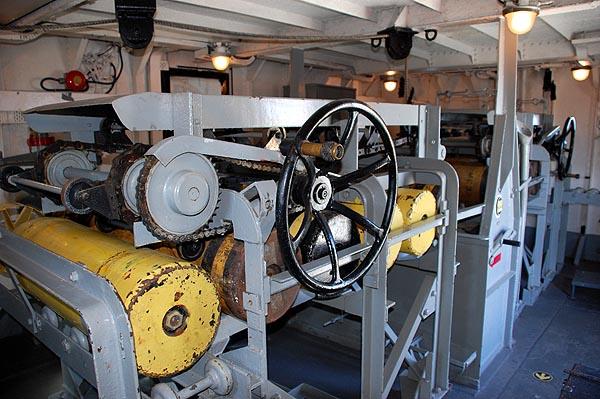 |
| A view of the Squid Handling Room looking forward and starboard. The bombs were hoisted from the Squid magazine and stored in racks until required. The calibre of the bombs was 12 inches. Reuseable practice bombs such as these, were painted yellow and weighted 130 pounds. |
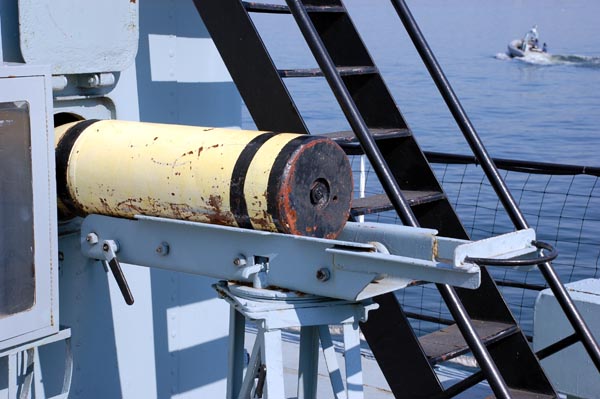 |
| From the Squid Handling Room, the bombs were placed on a trolley and pushed to the mortar barrel which needed reloading. |
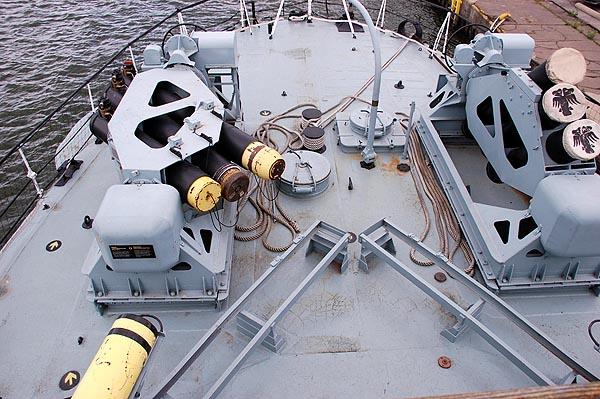 |
| The starboard mortar tubes have been swung
into the horizontal position in order to depict a loading state. The port
tubes are in the vertical launch position. Being welded to the frame,
made the tubes immovable except for loading and firing.
Once in the tubule, an electrical cable was attached to the nose of each Squid. This method provided the most current target depth information prior to the moment of launch. The other end of the cable was attached to an anchor point on the launcher. When the Squid was fired, the cable was sheared and the bomb was on its way to the target. Another bomb in the lower left corner is ready on the trolley. The explosive charge to fire the Squid would propel the bomb over the foremast and it would land some 275 yards ahead of the bow. When firing, one mount was cleared first, then the other. It is estimated that the propellant charge weighed somewhere around 1.5 to 3 pounds and the casing had a dimension of 10 inches long by 3 inches wide. |
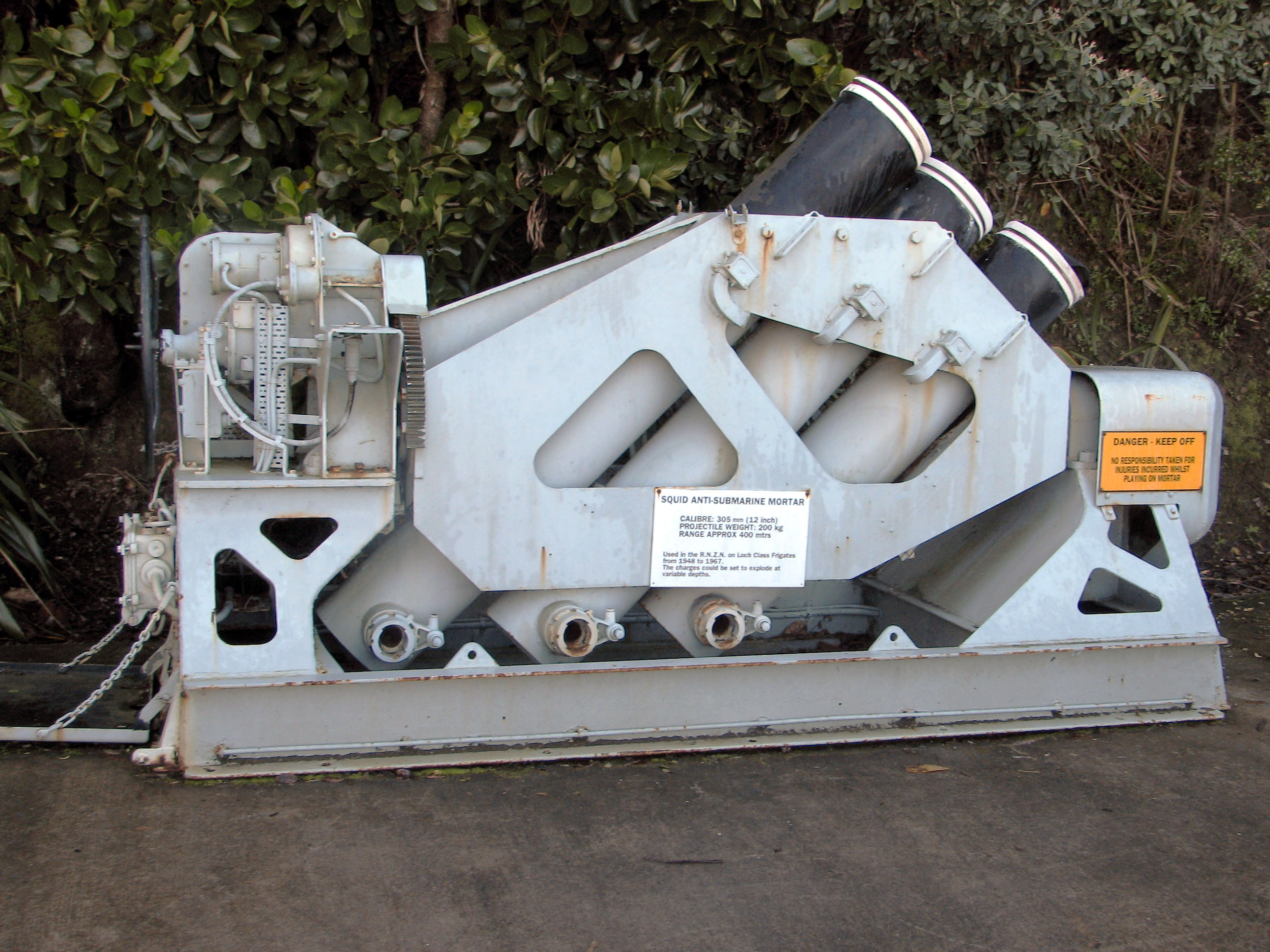 |
| Side view of the Squid launcher. Note the breech blocks at the bottom of each tube. That's where the propellant charge was inserted. Them the breech block (missing) was closed up. This weapon had a calibre of 12 inches. The mortars were mounted in series but off-bore from each other in order to scatter the projectiles after firing. The entire bomb weighed 390 pounds which included 207 pounds of Minol explosive . Maximum operating depth for Squid was 900 feet. (Image via Wikipedia) |
Jim Brewer, a former RCN Fire Control Technician, relates this little story about Squid. " I talked to a ex British sailor who was on a ship that had an incident with the Squid. There were two sizes of impulse cartridges - a small size for the practice bombs (like Haida's) and a larger version to launch a heavier but real bomb. They loaded the heavy bomb with but used the smaller propelling charge. The bomb made its way over the top of the ship and proceeded to crash into the paint locker which was in the bow of the ship. On HMCS Chaudiere, our guys did the opposite. They used the lighter practice bomb but with the big propellant charge. When launched , the bomb was still flying ahead of the ship as it passed into the horizon. These practice bombs were meant to float but we never found them."
Note 1: A metadyne is a direct current electrical machine with two pairs of brushes. It can be used as an amplifier or rotary transformer. It is similar to a third brush dynamo but has additional regulator or "variator" windings.Note 2: Any of a variety of devices that rely on magnetic slip rings to drive a transmitter and receiver that rotate in unison.
| Unless otherwise noted, all photos by Jerry Proc. |
Contributors or Credits1) Jim Brewer <snack.235(at)sympatico.cA
2) https://en.wikipedia.org/wiki/Squid_(weapon)
Sept 12/20